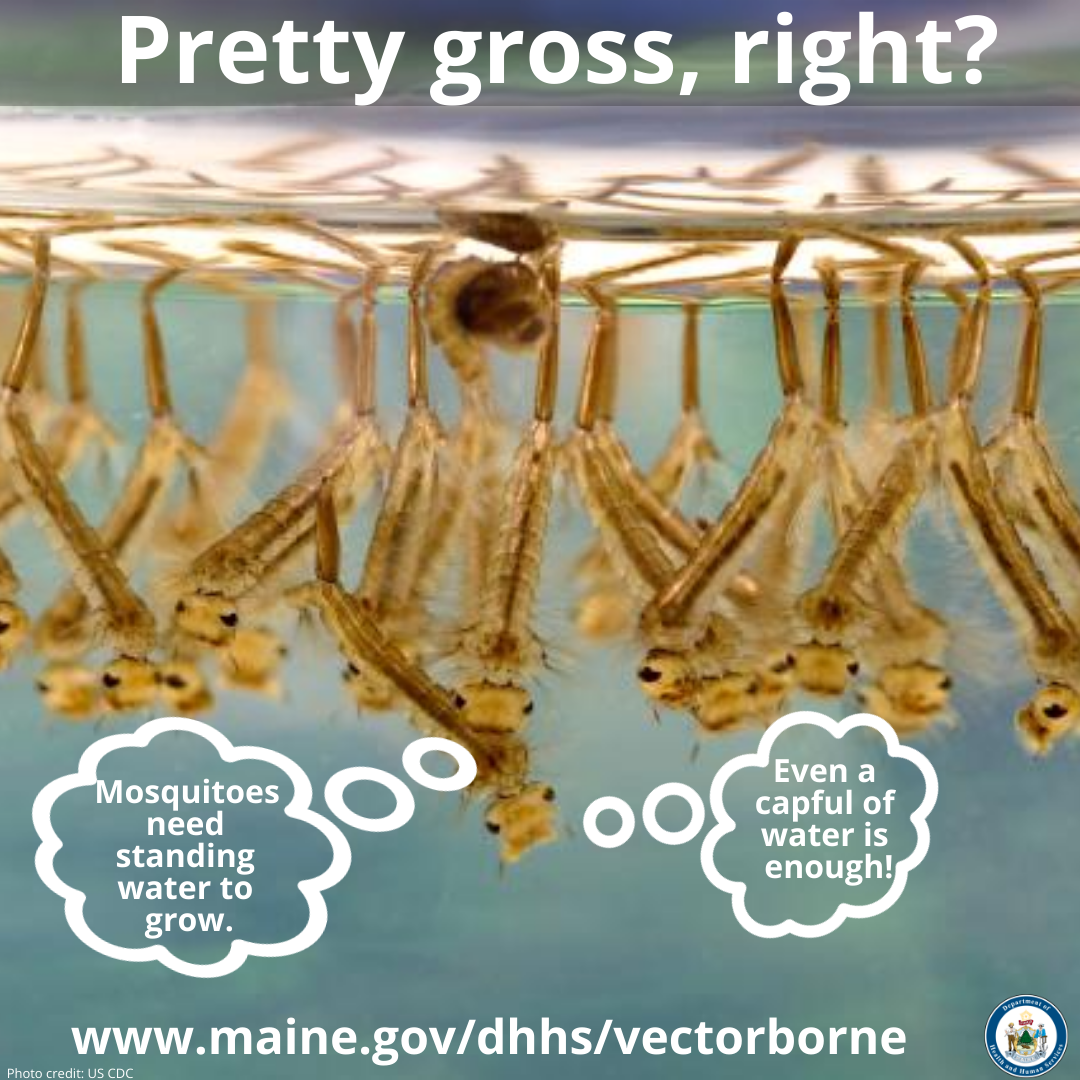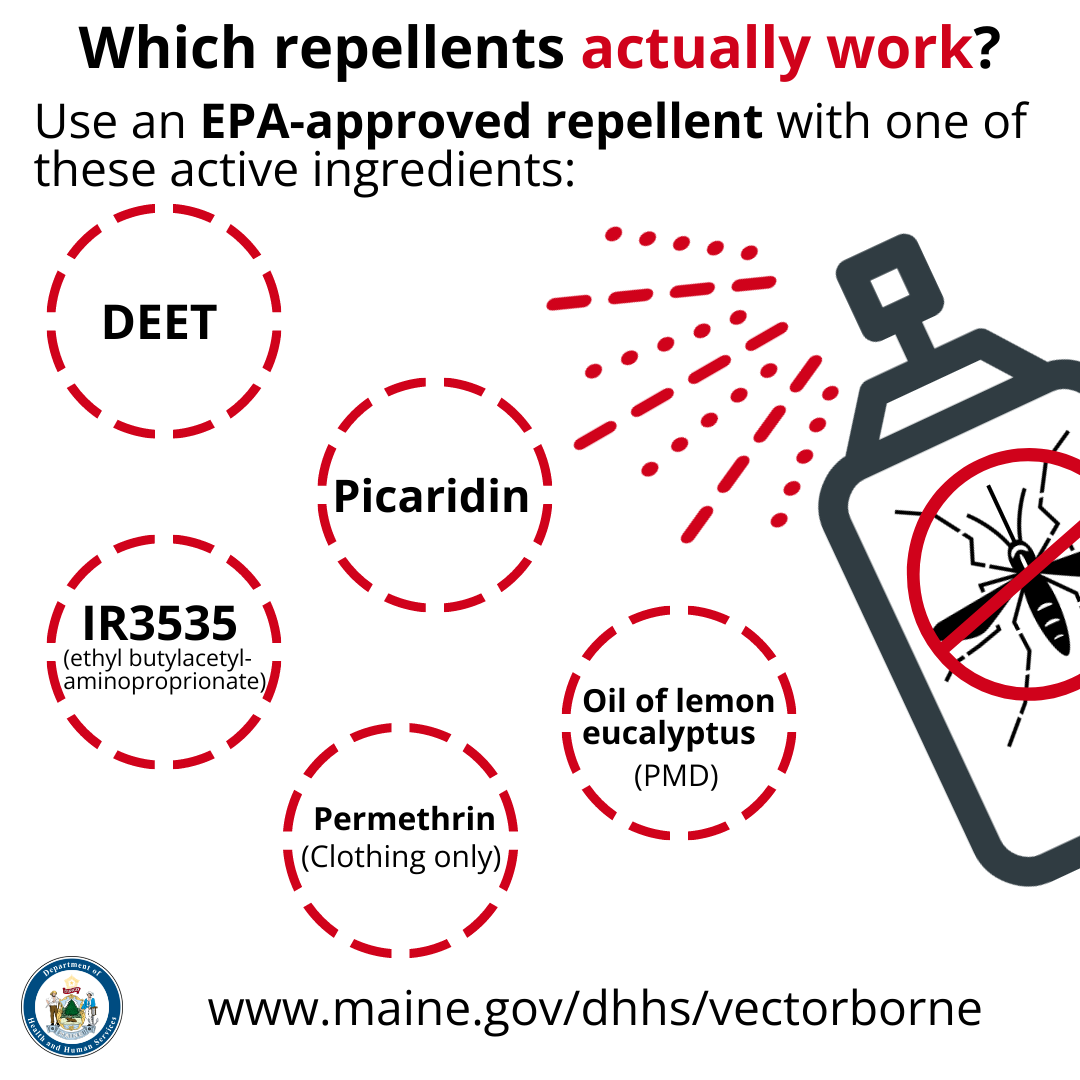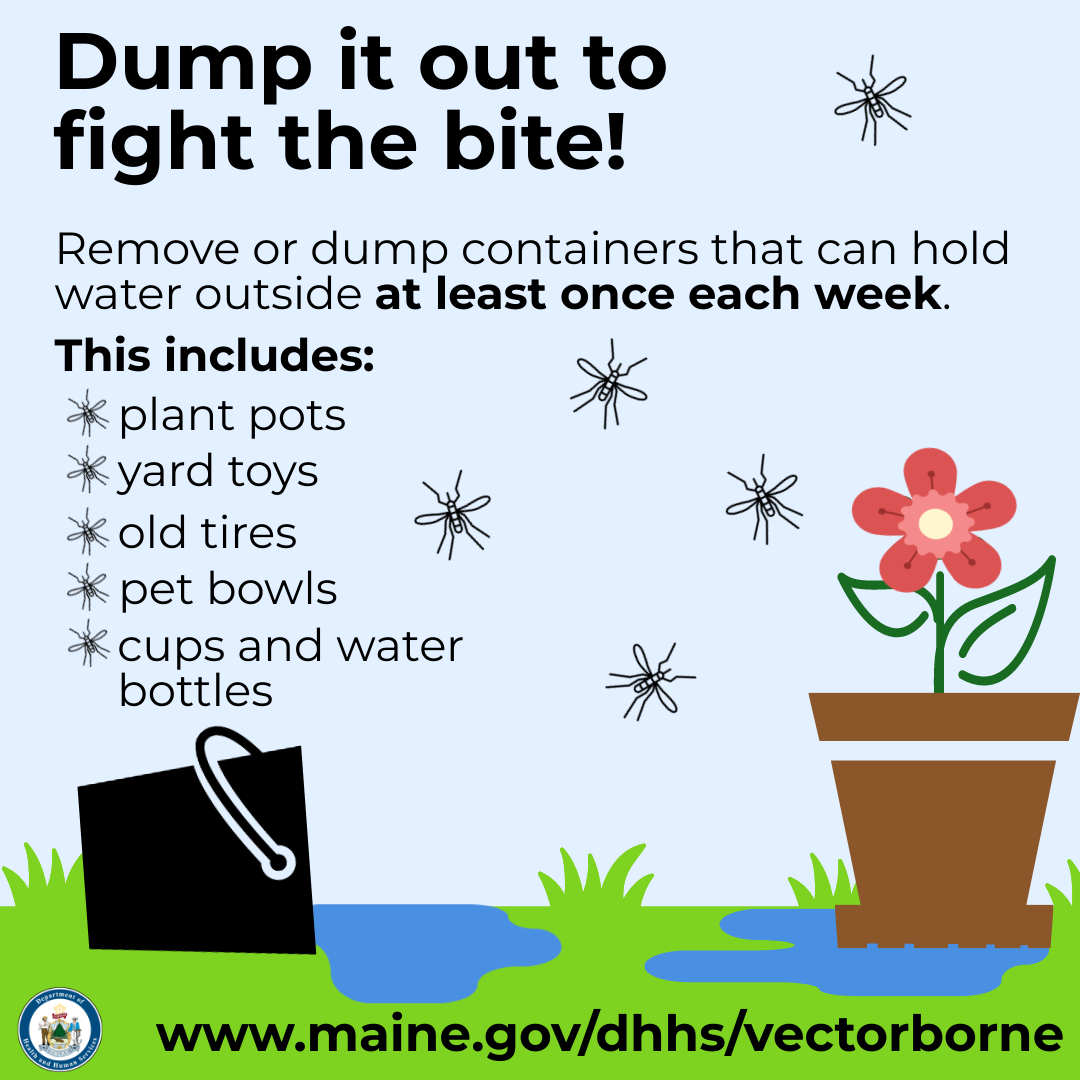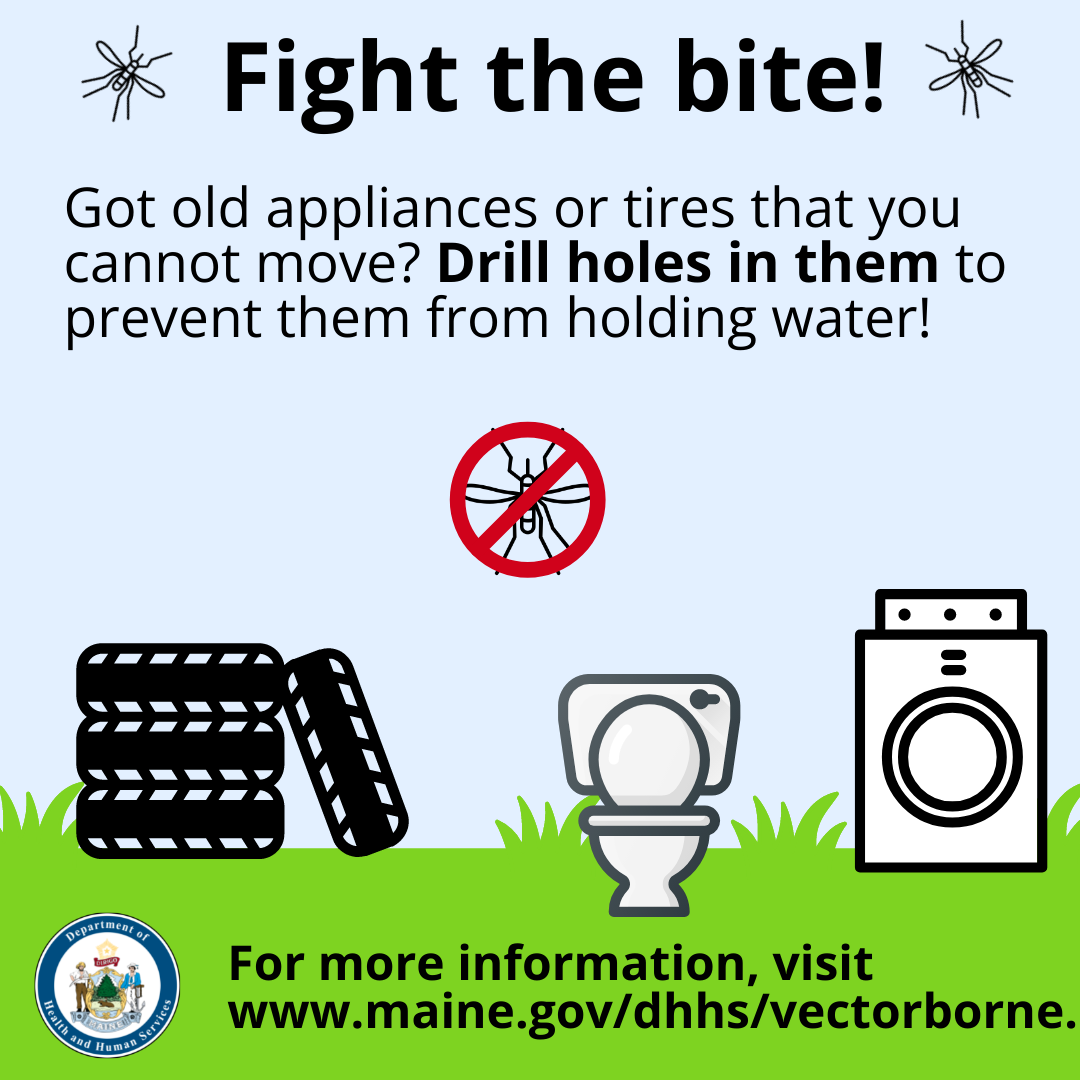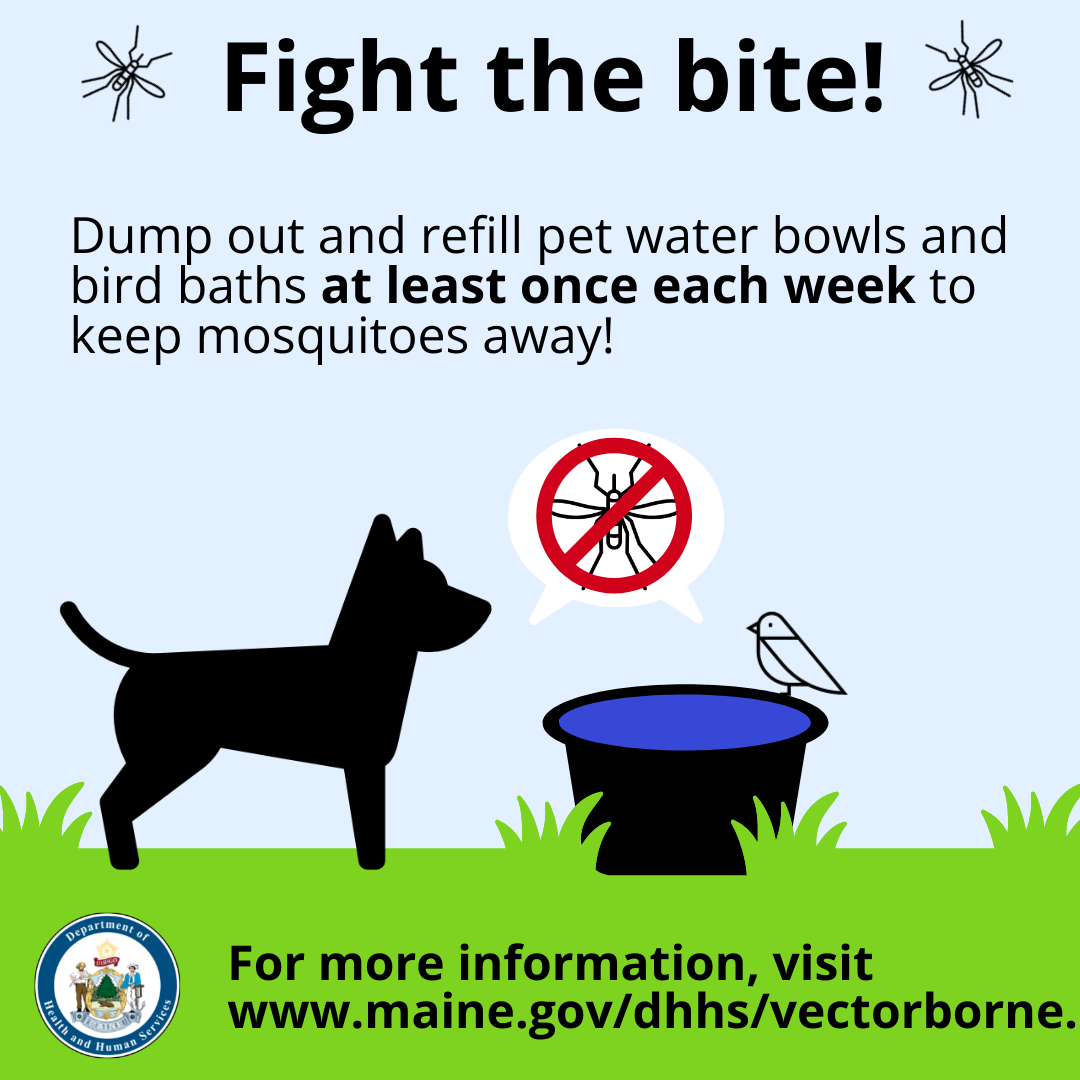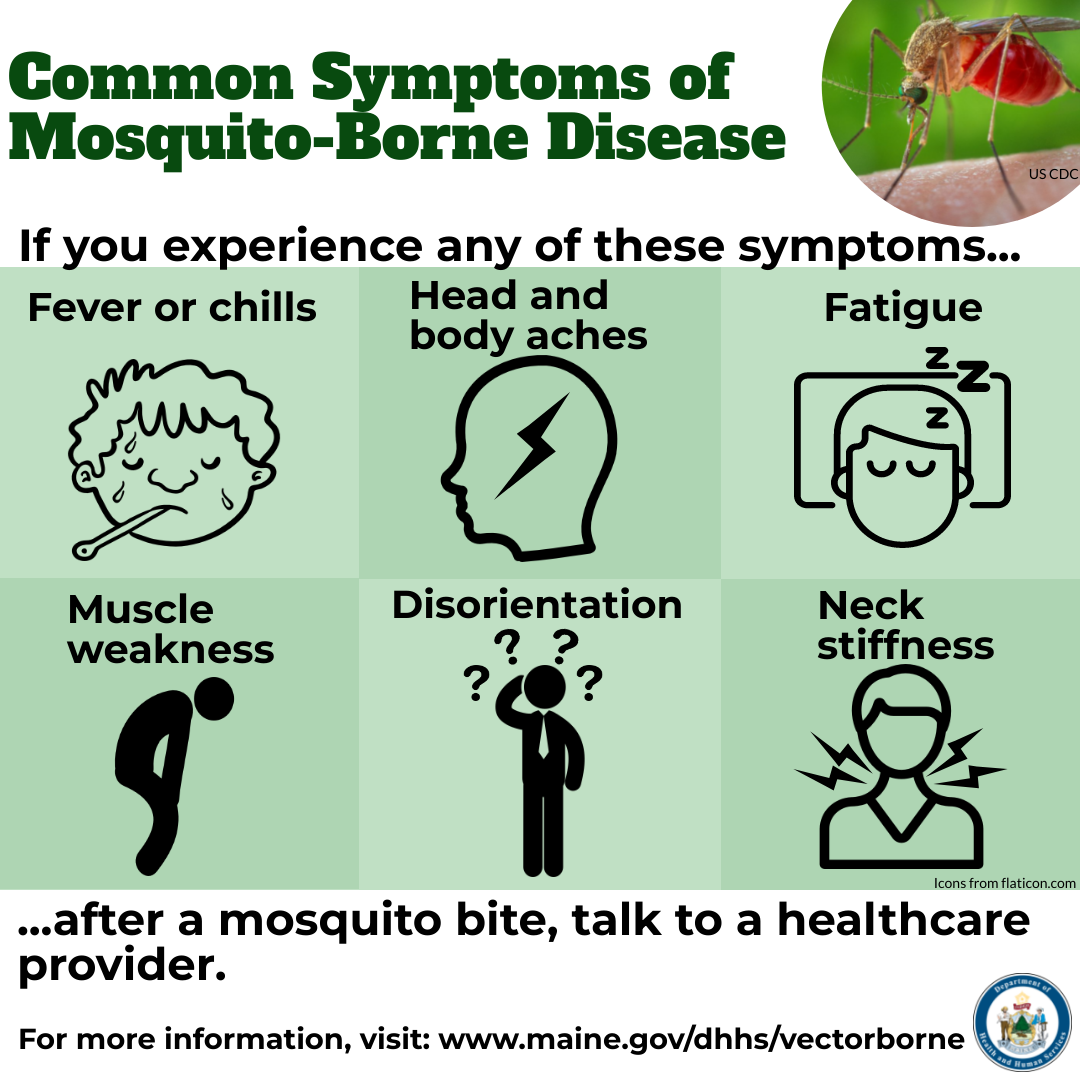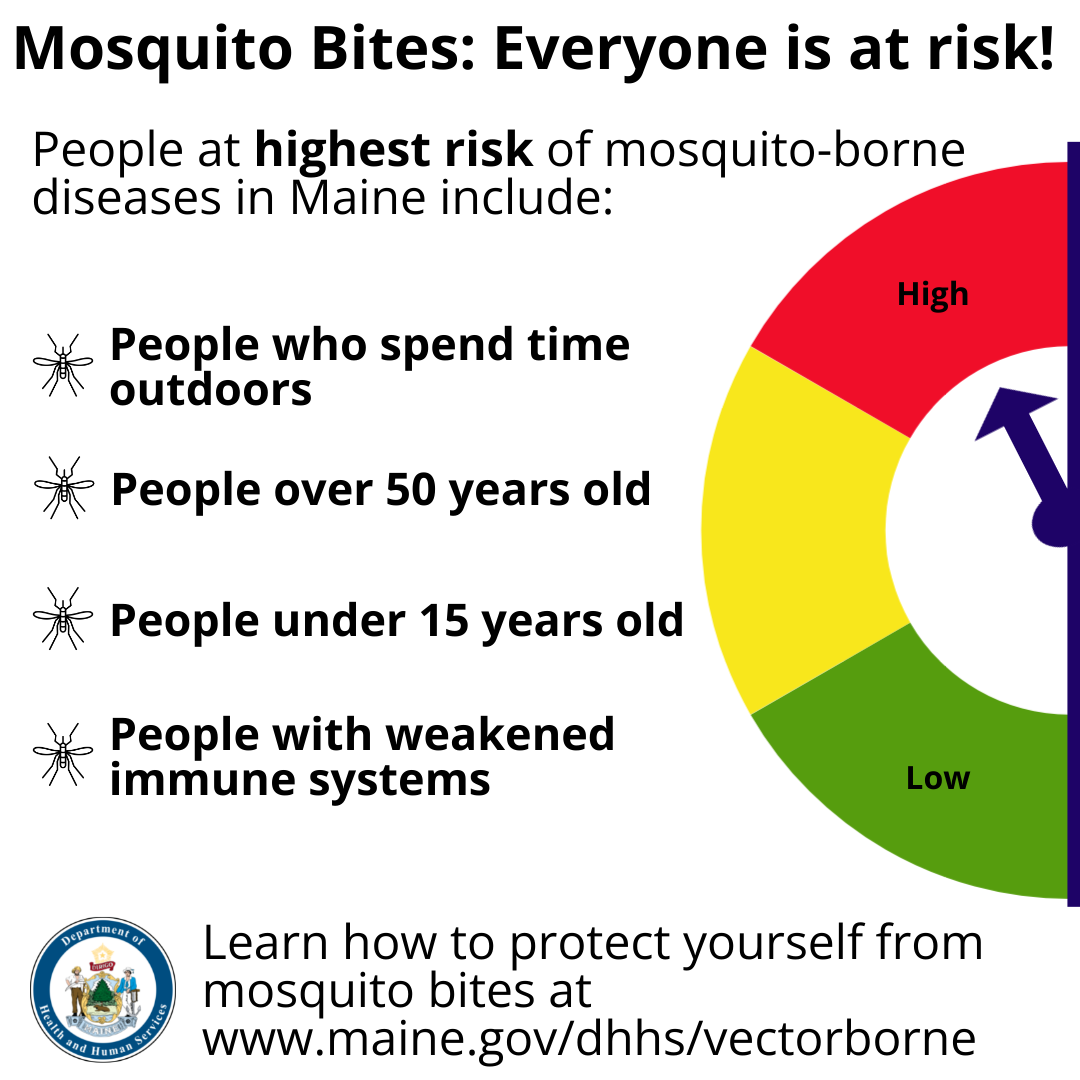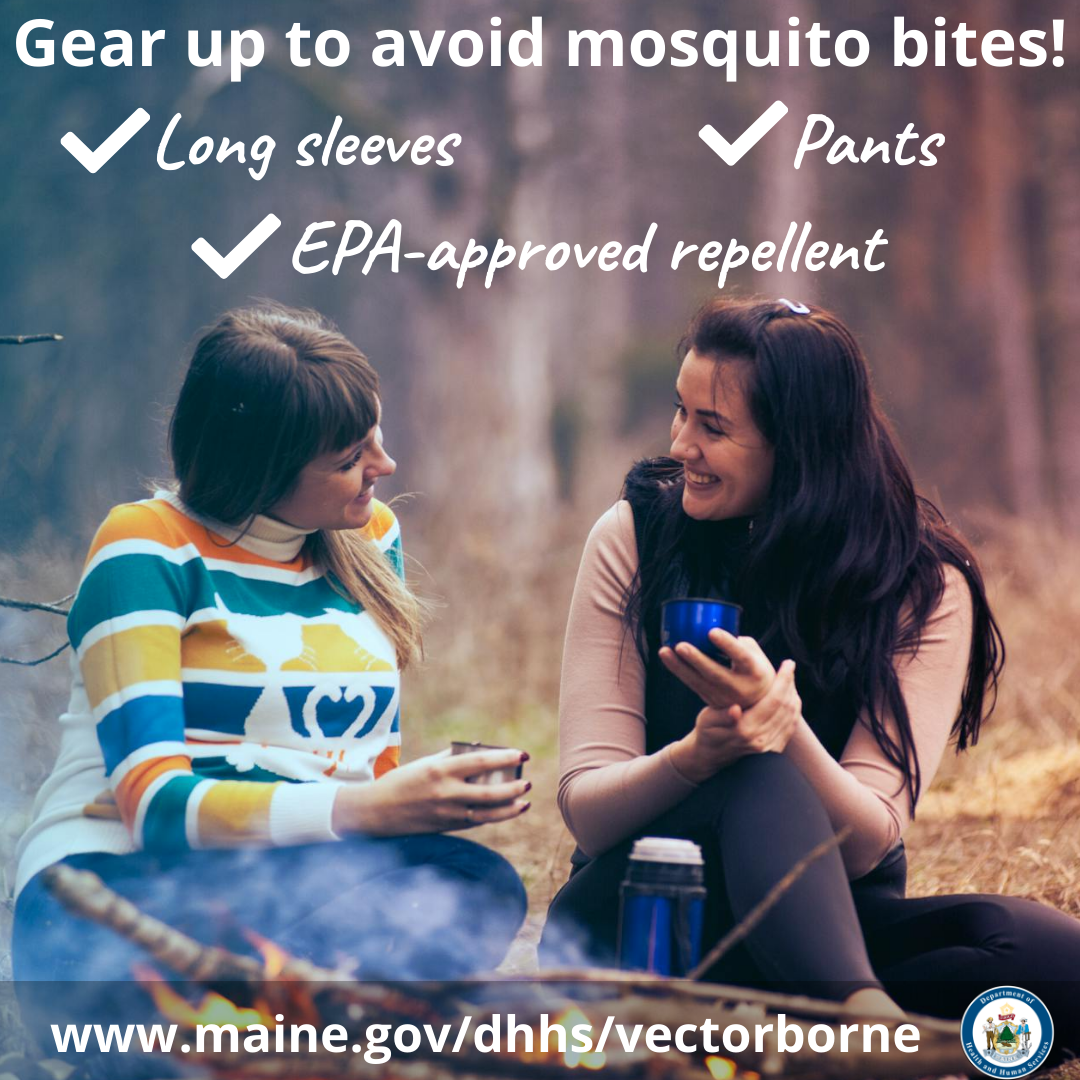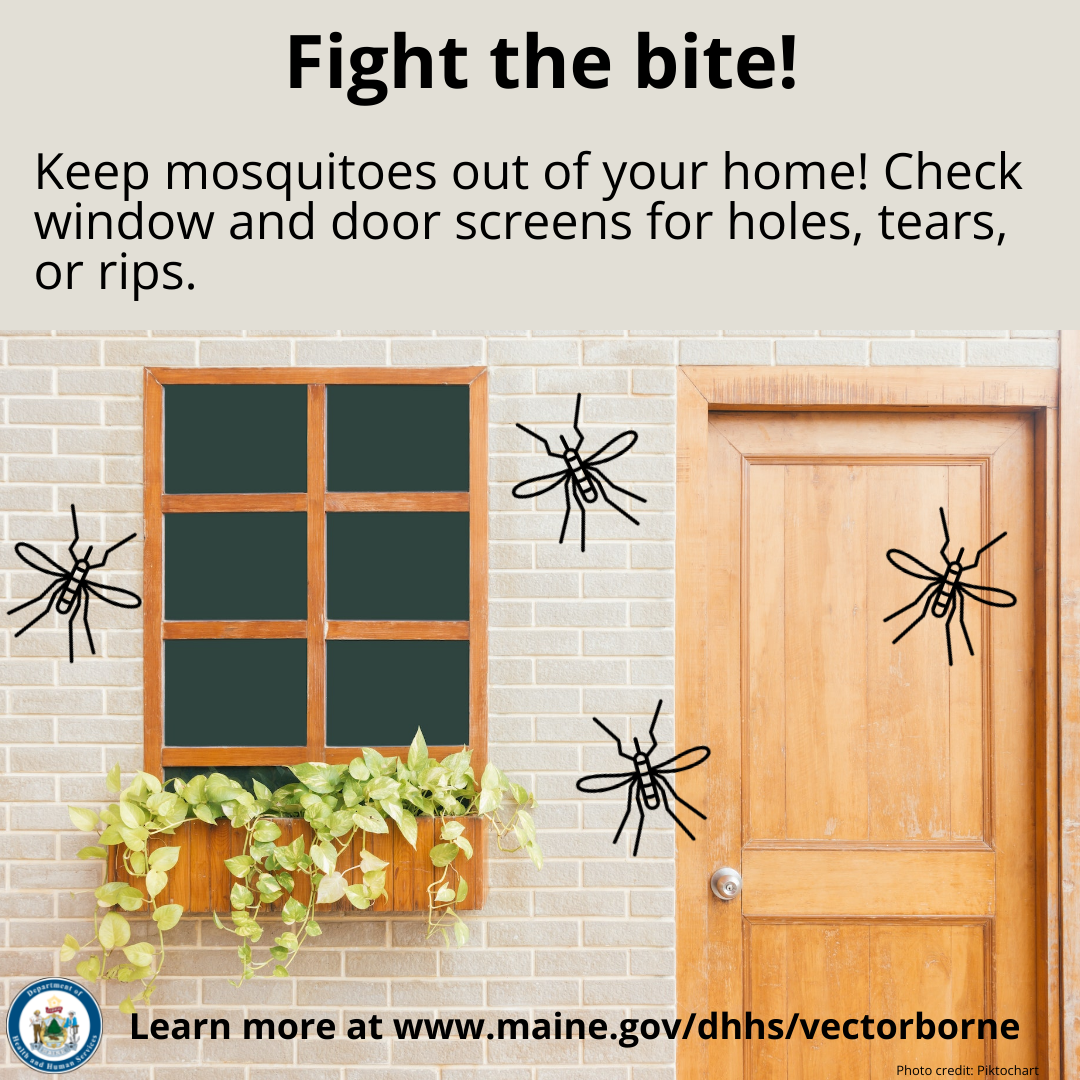DHHS → MeCDC → Disease Surveillance → Epidemiology → Vector-borne Diseases → Eastern Equine Encephalitis
Eastern Equine Encephalitis 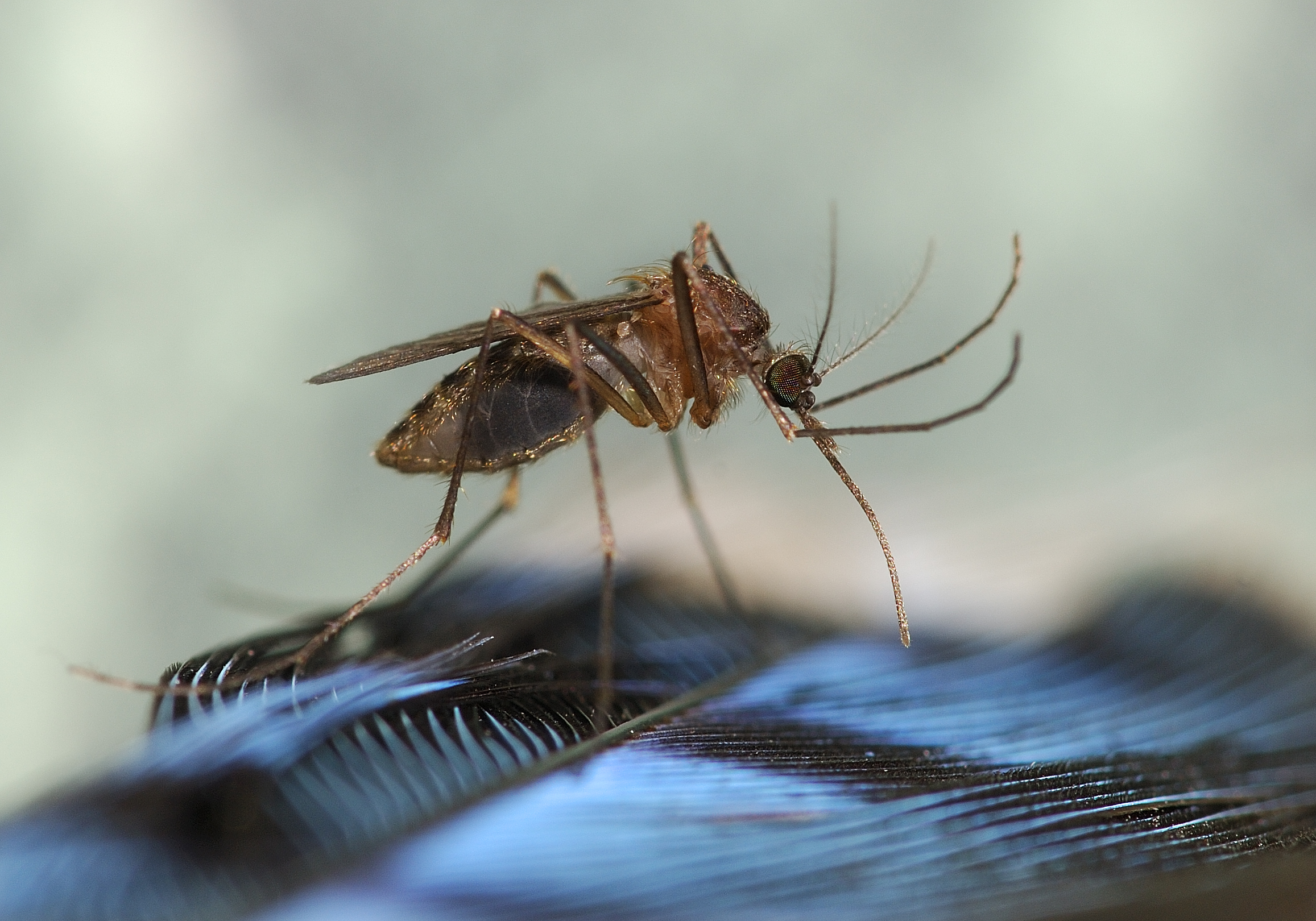
On this page:
- About Eastern Equine Encephalitis
- Symptoms
- Prevention
- Resources for Educators
- Reports and Publications
- Social Media Toolkit
- Eastern Equine Encephalitis Resources
Photo credit: US CDC
About Eastern Equine Encephalitis
Eastern Equine Encephalitis (EEE) is a disease caused by a mosquito-borne virus. EEE virus can cause disease in humans and some mammal and bird species. EEE virus can be found in the eastern half of the United States, including in Maine.
EEE virus spreads through the bite of an infected mosquito. Though it is rare, EEE is very serious. Anyone can get EEE, but people who spend time outdoors are at the highest risk.
Symptoms
Many people infected with EEE have no obvious symptoms. In people who do develop illness, symptoms occur 4 to 10 days after an infected mosquito bite. Symptoms typically last 1-2 weeks.
Common symptoms include:

Fever and chills

Weakness

Headache

Body and muscle pain
Signs of serious neurologic desease include:

Inflammation of the brain

Confusion

Neck stiffness

Coma
About one in three people who develop inflammation of the brain due to EEE die, usually 2 to 10 days after the onset of symptoms. Many people who recover from severe illness experience long-term physical or mental difficulties.
Prevention
There is no vaccine to prevent or medicine to treat EEE virus infection in people.
Prevent Mosquito Bites
The best way to prevent mosquito-borne diseases is to prevent mosquito bites in the first place. Take these simple steps every day to prevent mosquito bites:

Wear long-sleeved clothing and pants.

Use an EPA-approved bug spray.

Avoid outdoor activities from dusk to dawn, when mosquitoes are most active.
Protect Your Yard From Mosquitoes
You can make your yard a mosquito-safe zone:
- Empty sources of standing water around your home, including in man-made containers.
- Discard man-made containers around your yard that can hold water. If you cannot remove them, consider drilling holes in them to keep them from holding water.
- Put plant pots, yard toys, and other containers that hold water away or store-upside down to keep them from filling with water.
- Change the water at least once every week in containers that have to hold water, like birdbaths and pet water bowls. This makes sure that mosquito larvae (baby mosquitoes) cannot grow into adults.
- Check window and door screens for holes that mosquitoes can fly through and fix them.
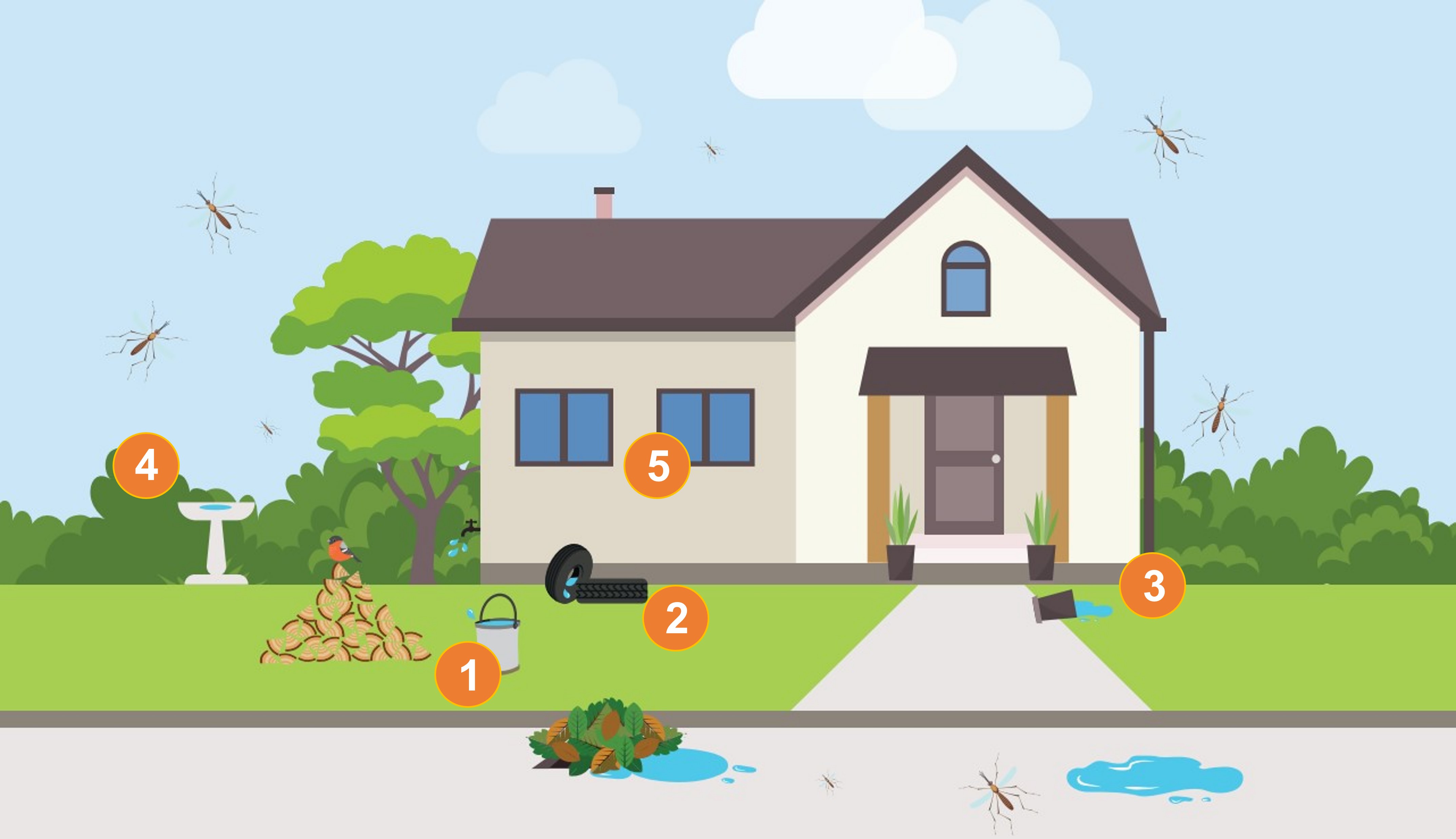
Resources for Educators
Maine CDC developed vectorborne school curricula for 3rd-8th grade classrooms. The curriculum is aligned with Maine Learning Results. School nurses, teachers, and other youth leaders are encouraged to use this resource in their classrooms.
Reports and Publications
EEE Surveillance Reports
Maine CDC publishes yearly data on cases and rates of EEE in humans, animals, and mosquitoes in yearly EEE Surveillance Reports. Reports are not available for years when no human, animals, or mosquitoes tested positive for EEE.
Arboviral Surveillance
Mosquito, animal, and humans specimens get tested for Eastern Equine Encephalitis virus (EEE), JCV, and West Nile virus (WNV) in Maine. The results are published in Weekly Arboviral Surveillance Reports from July to September each year. This data helps Maine CDC to understand where in Maine mosquitoes might be infected with these diseases and guide mosquito control efforts to prevent humans and companion animals from getting sick.
Social Media Toolkit
EEE Resources
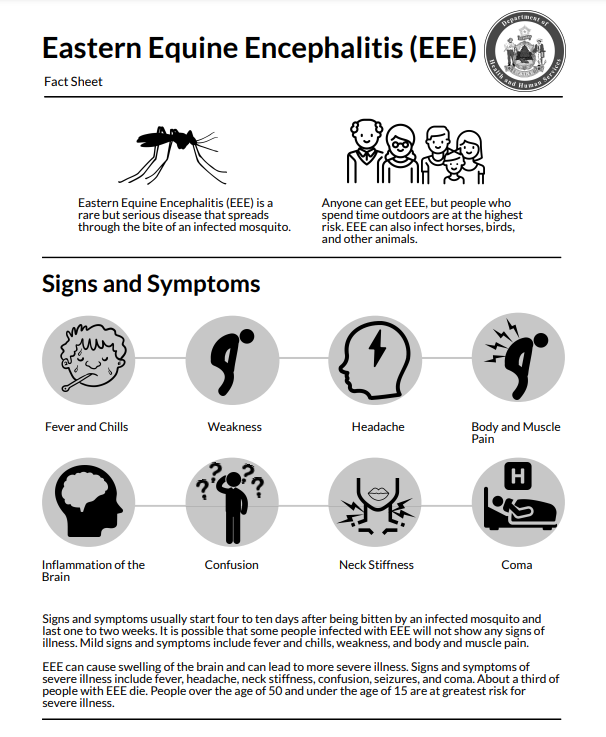
EEE Fact Sheet (PDF) | عربي | Français (PDF) | Kreyòl Ayisyen (PDF) | Kiswahili (PDF) | Lingala (PDF) | Português (PDF) | Soomaali (PDF) | Español (PDF) | Tiếng Việt (PDF)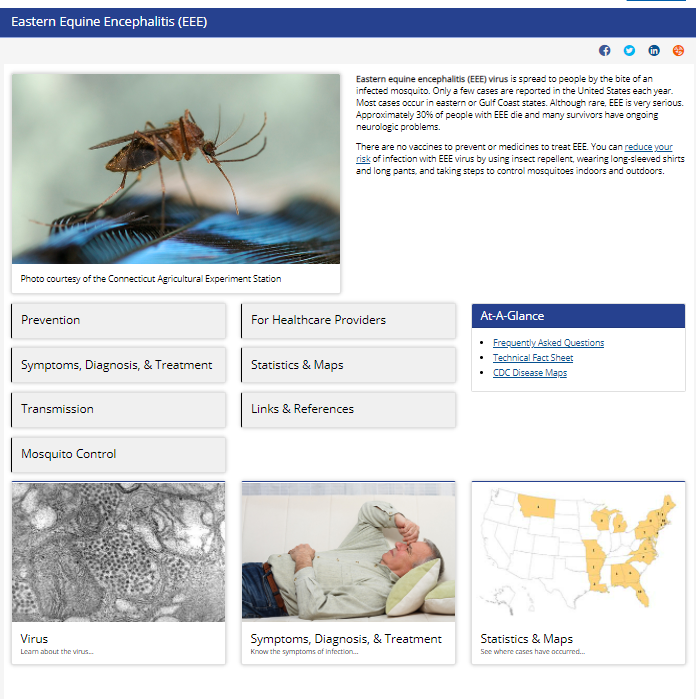
US CDC EEE Information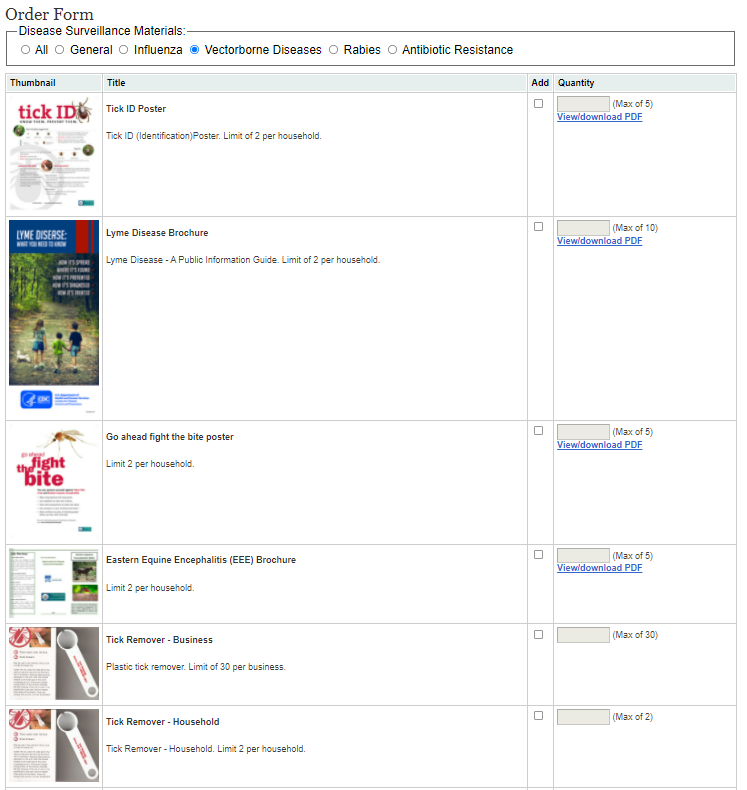
Orderable Materials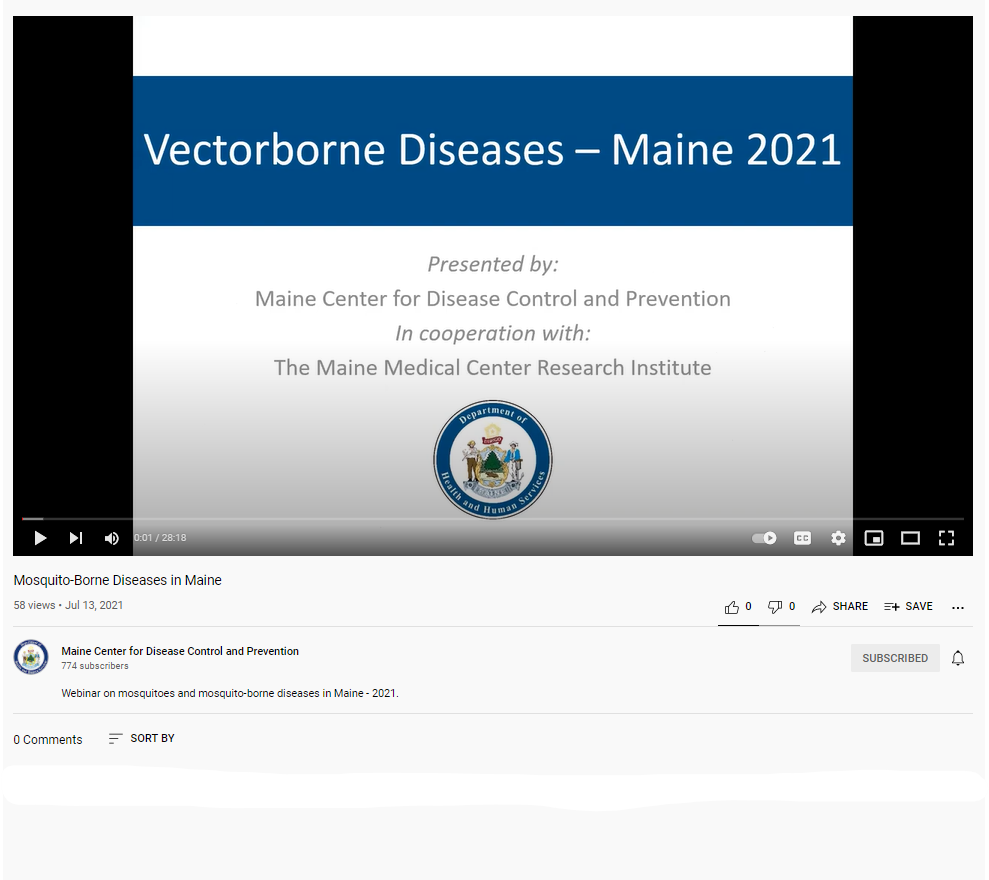
Mosquito-Borne Diseases in Maine 2024 Webinar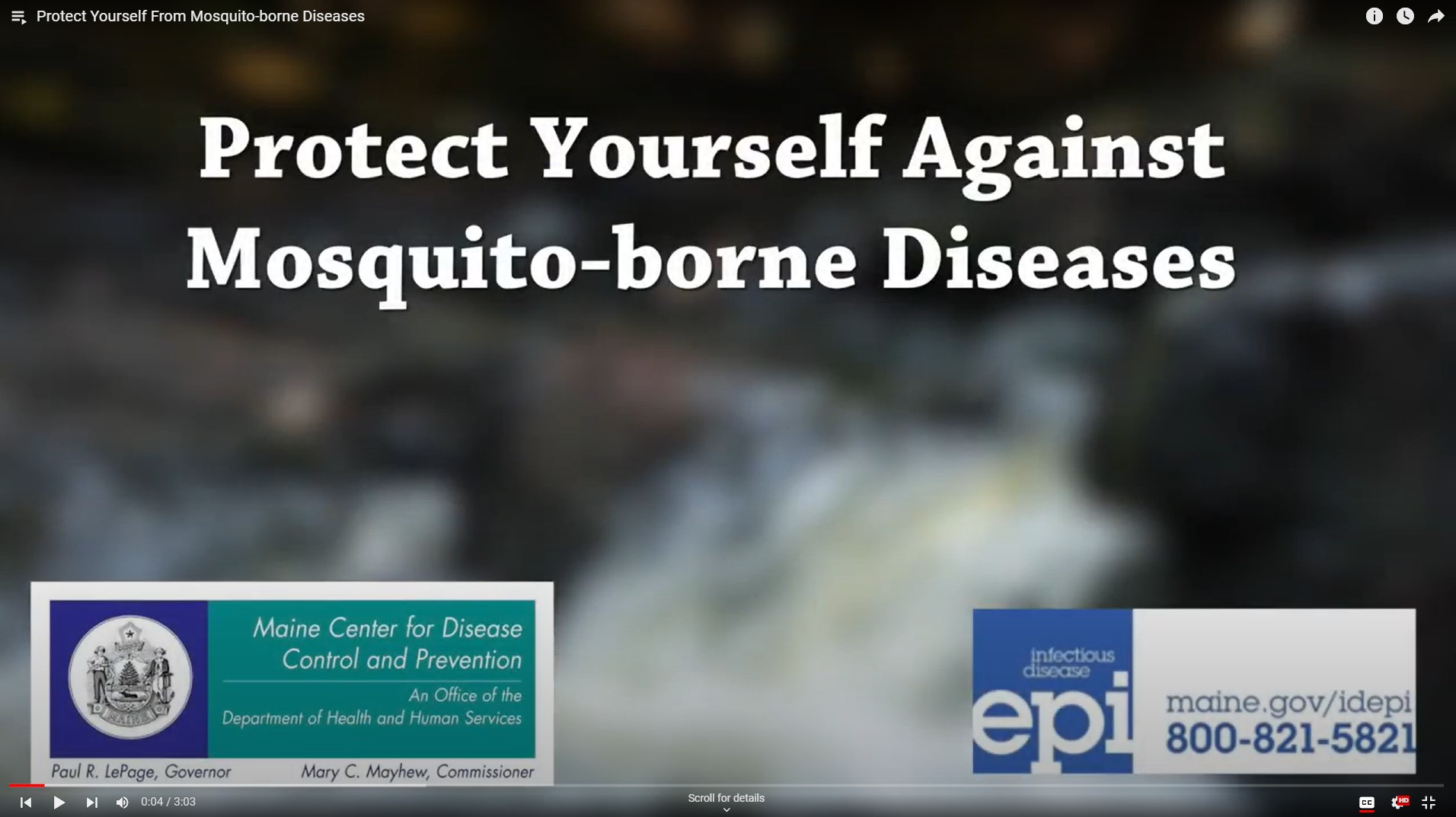
Protect Yourself Against Mosquito-borne Diseases Video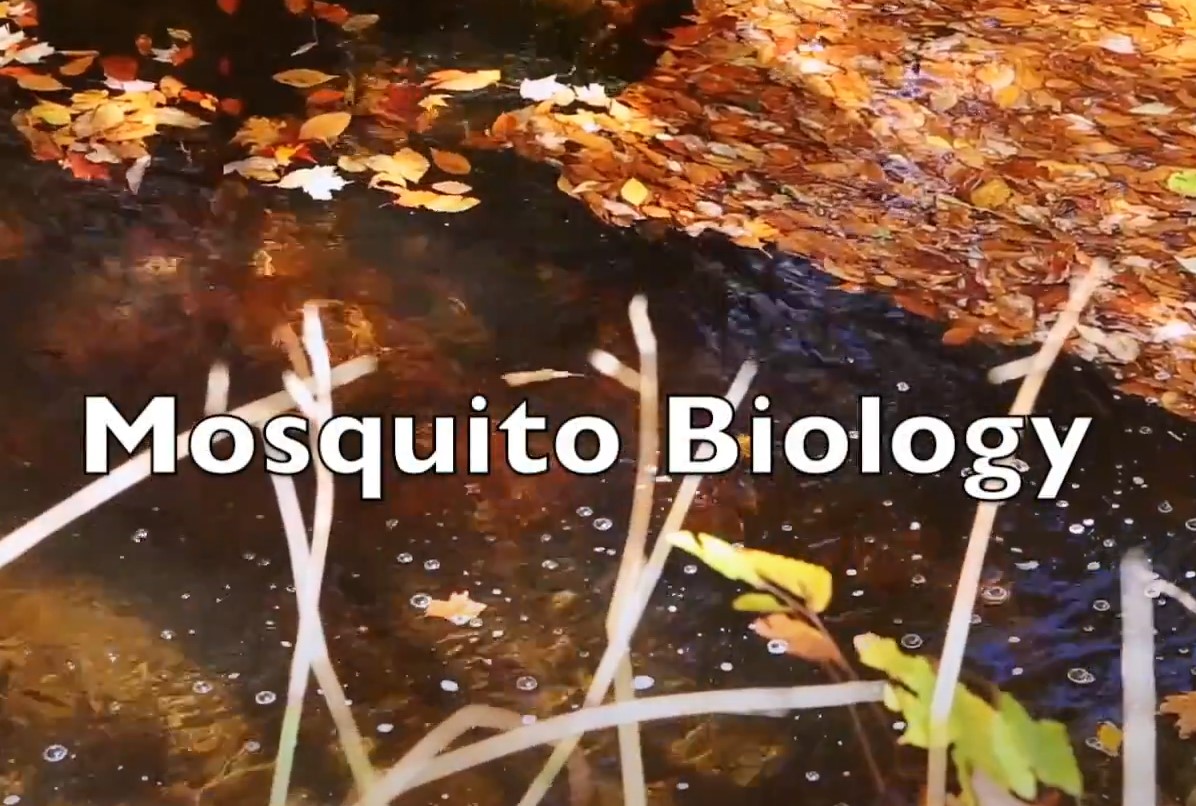
Mosquito Biology Video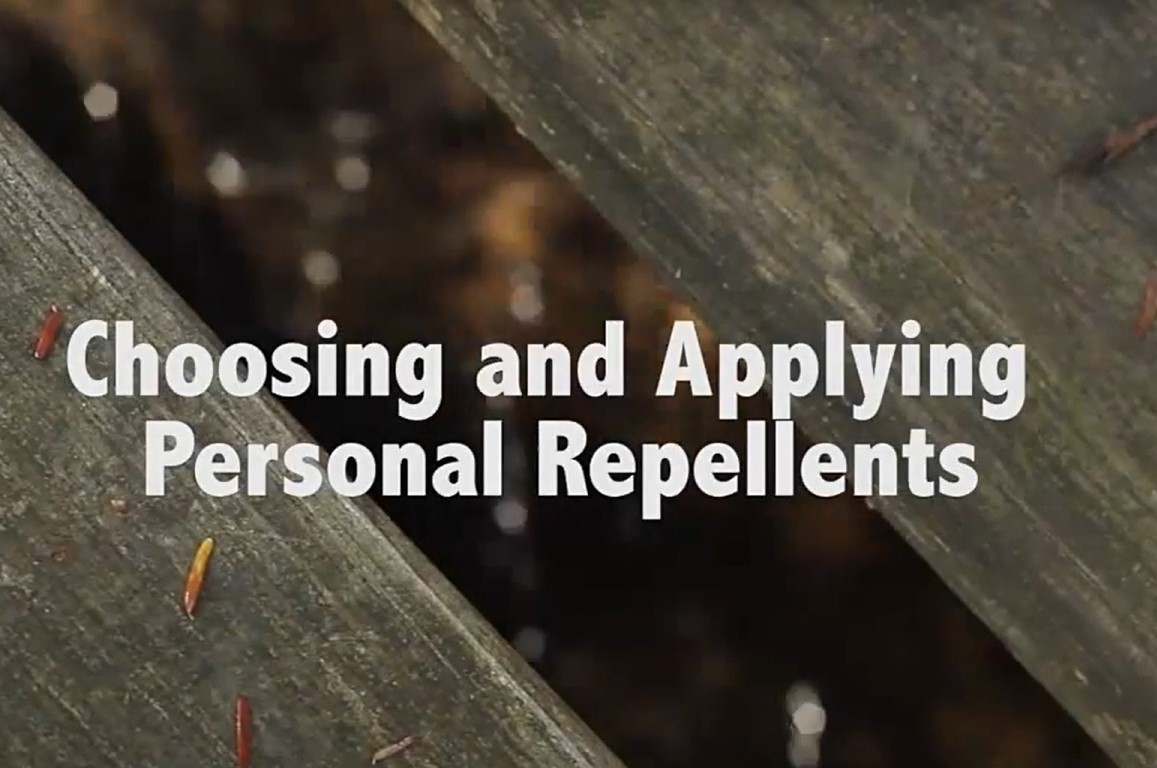
Choosing and Applying Personal Repellents Video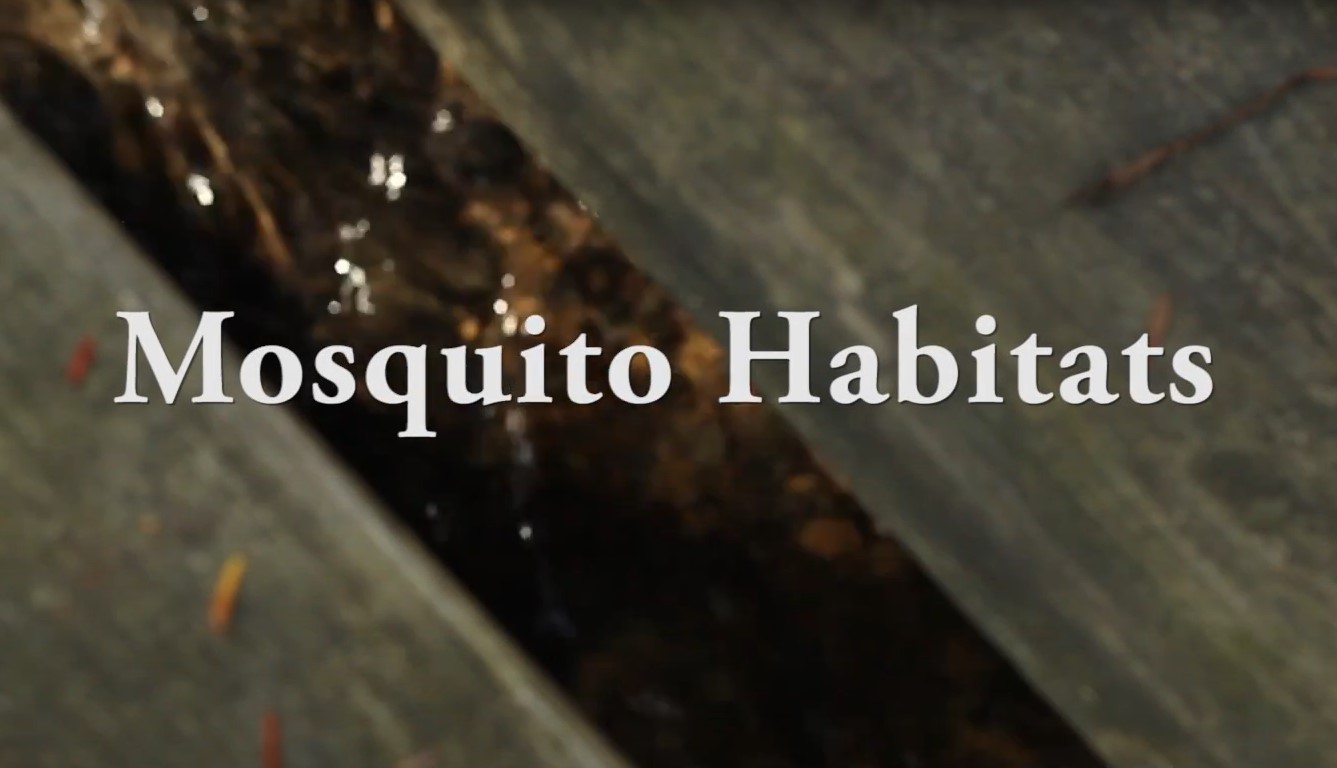
Mosquito Habitats Video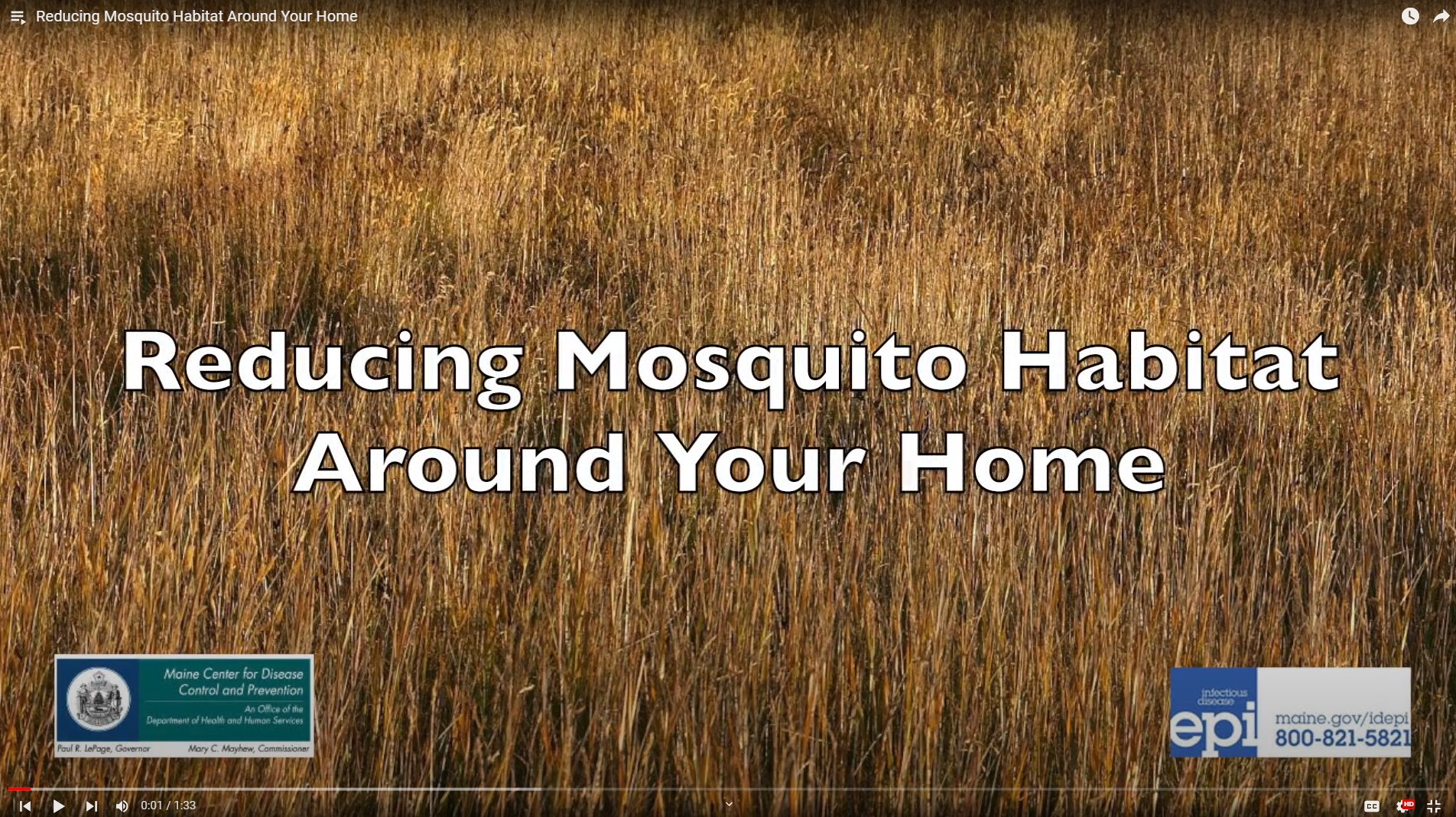
Reducing Mosquito Habitat Around Your Home Video
How to Choose a Residential Pesticide Applicator Video
Icons from www.flaticon.com
